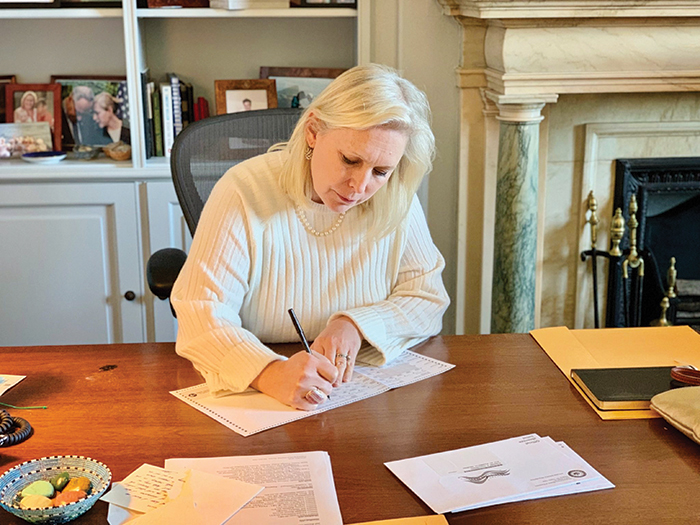Photo Courtesy of Sen. Gillibrand
“I am urging congressional leadership to deliver $67 million to the AHEC program in order to address the health care staffing shortage and to recruit, train and build the next generation of health care workers,” Sen. Gillibrand said.
By Michael V. Cusenza
U.S. Sen. Kirsten Gillibrand (D-N.Y.) is urging congressional leadership to provide $67 million for the Area Health Education Centers program at the Health Resources and Services Administration.
The U.S. is currently facing a historic health care worker shortage that’s been exacerbated by the strains of the COVID-19 pandemic, and the problem is only expected to worsen, Gillibrand warned in a letter to Senate Appropriations Committee leadership. Experts estimate that the country could see a shortfall of as many as 124,000 physicians by 2034, and New York alone is projected to be short more than 39,000 registered nurses by 2030. More than 5 million New Yorkers live in primary care Health Professional Shortage Areas; this figure exceeds the primary care HPSA populations of 46 other states.
“Over the last year and a half, our health care system and our health care providers have been under historic levels of stress. They have worked night and day – at great risk – to meet rising demand and keep their fellow New Yorkers safe and healthy, and they need reinforcements,” Gillibrand said. “I am urging congressional leadership to deliver $67 million to the AHEC program in order to address the health care staffing shortage and to recruit, train and build the next generation of health care workers.”
According to the senator, AHECs commit to diversifying the health workforce by recruiting a diverse population of youth to health care careers and facilitating the distribution of clinicians, especially in underserved and rural communities. Each AHEC places health professions students in a variety of real-world settings, such as migrant, urban, and rural community health clinics and health departments to provide health care to surrounding populations. With close to 50 years of operation, AHECs meet the current and emerging needs of the communities they serve through community-academic partnerships, with a focus on exposure, education, and training of the current and future health care workforce, Gillibrand said.
AHECs serve 85 percent of all counties nationally and support health care workforce development and education by training providers in interdisciplinary settings to respond to the needs of special and underserved populations. In New York State, there are three regional centers and nine AHECs statewide. Local New York Area Health Education Centers also work to address workforce shortages by introducing high school students to careers in health care and working with local nursing, medical, and physician assistant schools to provide students an opportunity to understand the social and cultural factors that influence an individual’s overall health and access to quality care.
“At a time when the country is facing health provider shortages coupled with the COVID-19 pandemic, it is critical that we increase support to the AHEC program,” Gillibrand wrote in her letter. “The AHEC program brings more trained and skilled health providers into the workforce in a way that is responsive to local health needs. AHECs connect academic training programs with community-based outreach programs and, because AHECs are embedded in the communities they serve, they are positioned to recognize and respond to needs of vulnerable and underserved populations as such needs arise.”

